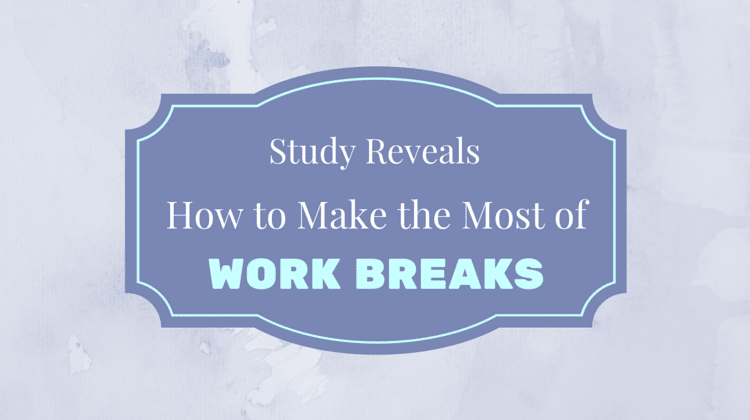
Sponsored by Furniture at Work:
People in the UK who work for six hours or more a day are entitled by law to an uninterrupted break of 20 minutes, and many companies allow their personnel to take more time out than this. These rest periods can give employees some much-needed downtime, but what exactly constitutes the perfect work break?
This was the question that two researchers from Baylor University in Texas recently tried to answer. In a study entitled ‘Give Me a Better Break: Choosing Workday Break Activities to Maximise Resource Recovery’, Dr Emily Hunter and Dr Cindy Wu investigated the effects of different types of breaks. The pair, who published their findings in the Journal of Applied Psychology, polled nearly 100 employees over a typical five-day working week. Each respondent was asked to record the breaks they took over this time. For the purposes of the study, a break was identified as any period when they were not expected to complete work tasks.
Key Findings
The researchers discovered that the best time to take a break was mid-morning. About this, they remarked, “We found that when more hours had elapsed since the beginning of the work shift, fewer resources and more symptoms of poor health were reported after a break. Therefore, breaks later in the day seem to be less effective.” This study also revealed that individuals who took breaks earlier in the day doing something they liked experienced reduced levels of health problems like headaches and pain in their lower backs.
Another conclusion drawn from the research was that while longer breaks are beneficial, it’s best to take shorter breaks on a more frequent basis. This pattern of rest periods was associated with better recovery for workers.
Learning the Lessons
By taking note of studies like this and ensuring their employees take enough good quality breaks, companies across the world stand to raise staff morale and increase their productivity. To encourage their personnel to spend break times away from their workstations, a rising number of organizations are creating special areas where personnel can gather to socialize and de-stress.
Office furniture providers are recognizing the need for seating designed specifically for these spaces, such as modular furniture. According to Furniture At Work™, this type of furniture can be repositioned to create different arrangements for different spaces and purposes. Businesses should consider whether they want a zone to encourage their workers to socialize with each other or to be used by individual staff members looking for some ‘head space’ and arrange their seating with this in mind.
Companies can take things a step further by offering their personnel the chance to play games with their colleagues too. Table tennis, pool, darts and foosball are all good examples of activities that can bring added life and personality to these spaces. When employees are given the chance to really relax while away from their desks, they are more likely to return to their tasks feeling re-energized and alert.
Making sure that their staff members take plenty of breaks may not seem like the best route to increased productivity, but as the Baylor University study highlights, it can play an important role in keeping personnel engaged and productive.